The travel sector is growing at a phenomenal rate with more people than ever looking to explore the world. International tourist arrivals in Europe alone reached 713 million in 2018, a figure that could potentially climb another 3-4% throughout 2019. There’s clearly a market, but how can you stand out from the crowd? Here are 10 tourism marketing strategies to do just that.
The importance of being socially savvy
We’re getting straight to the point. Being socially savvy in this day and age is a must? Here are the facts:
- 73% of consumers claim that they’ve been influenced by a brand’s social media presence when making a purchasing decision.
- 30% of travellers in the United States are now turning to social media to find trip inspiration.
- Travel gets mentioned more on social media than Justin Bieber, Katy Perry and Taylor Swift combined.
- 53% of Facebook users say their friends’ photos inspire their travel plans
- 40% UK millennials say they consider how Instagramable a location is when trip planning
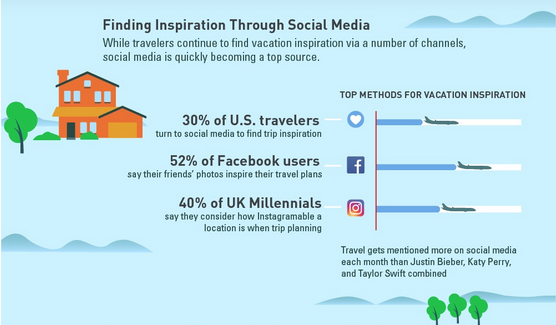
Looking at the stats, it’s clear that tapping into a socially minded audience has the potential to improve the visibility and relevancy of your brand. But what’s the best place to start? Check out these tips:
#1 Make the most of Instagram stories
Instagram is the spot to be for tourism brands. It provides the perfect place to showcase impressive and enticing visuals, so upping the standard of your content is essential. But there’s more. 400 million people post of watch Insta stories every single day. So, by getting involved you can add another level of interest and intrigue. Take a look at Airbnb’s stories below. They’re divided up into different categories to ensure all posted content is easily accessible, relevant and useful. Insta is also great for sharing the love. Got a beautiful restaurant in Venice? Tag your local taxi company, hotels, the tourist boards clothing stores in relevant posts and enjoy some social media karma.

Top takeaway: Take consumers on a journey. Offer essential advice and information by using clear imagery and explainer text. Be as useful to the reader as possible. In Airbnb’s tip sections they post an array of clips on how to improve your Airbnb home for guests.
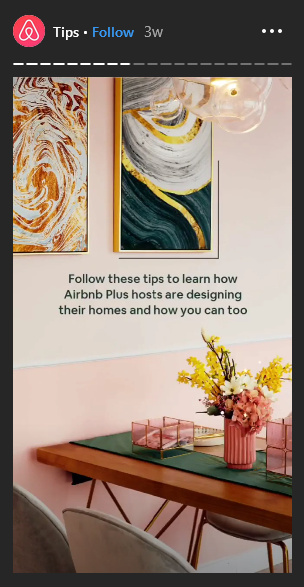
#2 Write a longer caption
Sticking with Instagram for a moment. It’s not like Twitter where space is limited. Captions can be up to 2,200 characters long. And seeing as one of the factors that affects how your Insta post performs in the algorithm is “time spend on post” it’s wise to write engaging and longer captions.
While every post doesn’t have to be an essay, writing a few full sentences that support your chosen image is better for engagement rates that just a few basic emojis. Captions can also humanise your brand and give more information about the background of the pic. Tagging the relevant people will also help to build your Insta community and encourage others to interact.
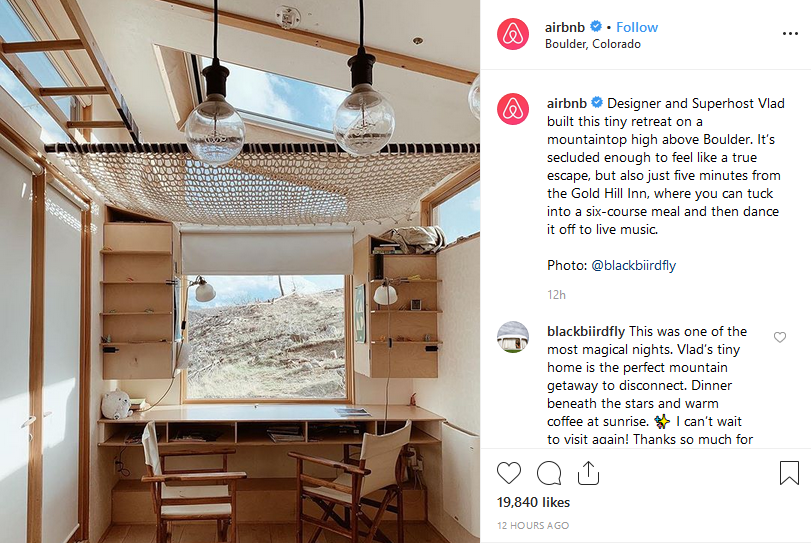
Top takeaway: Get descriptive for algorithm reasons but also to explain your image. Tag relevant people including the photographer.
#3 Encourage users to share content using a specific hashtag
When it comes to travel and tourism, people love to share their experiences online. Indeed, 60% of travellers share photos to social media while travelling with 97% of millennials sharing their adventure snaps. Checking in is also a big deal, especially for those aged 18-29.
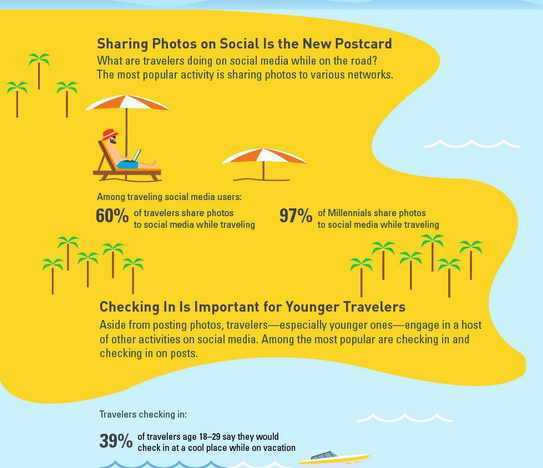
So what can you do? Well there are many different ways to utilise all that juicy, organic content. Firstly, why not host a travel competition, encouraging people to share content using a specific branded hashtag? Not only will this help improve brand awareness but it will give you access to a whole load of organic content that can promote the existence of your company in an authentic and non-pushy way. Plus, if you write the rules correctly, you will also have the rights to a load of hands on photos.
The #OriginalTravelCompetition below is a great example of how to do this:

Top takeaway: Be very specific with your instructions. Competitions are designed to spread brand awareness so a branded hashtag is the way to go. Always write rules and terms if there is any sort of giveaway involved.
#4 Expand social campaigns with fresh, useful content
Photography competitions are easy to take part in and therefore ideal for intrepid explorers. But rather than simply post about the competition and let it lie, it’s a good idea to generate fresh content to maximise exposure. Also, Google loves new stuff so it’s a win-win. Don’t be afraid to promote your campaign away from social platforms too including via your company website.
The below example is from Wanderlust’s Photo of the Year Competition.
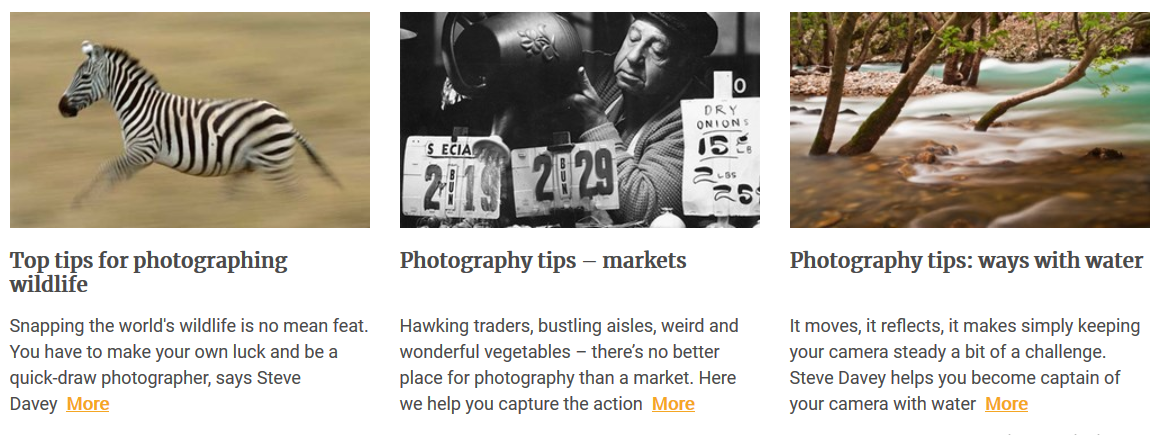
Top takeaway: Look at each travel campaign from multiple angles and work out what content is needed? Think about how you can be useful to those interested in your social media initiative.
#5 Follow up all travel campaigns
When it comes to tourism marketing, it’s essential to know what works and what doesn’t. And that means tracking and analysing all campaigns across social media and beyond. Also, if you’ve managed to generate a following, don’t simply leave your audience hanging. Instead, announce the results via the relevant social media platforms. You can also shout about them on your blog and website. Or, create a series of PRs and place them in suitable publications so that people can read about and remember your initiative.
Here is Wanderlust’s 2018 Photo of the Year competition results with the winner of the Travel Icons category posted below.

Top takeaway: Each marketing strategy should have a starting point, a middle and an end. You should be able to wrap things up for your followers. But also, as a company, it’s crucial to know the campaign stats as this will help to shape future strategies.
#6 Tweet with images and link to content
Tweets with images receive 150% more retweets than tweets with no images. Therefore, when coming up with your next tourism marketing strategy, make sure your social content is visually impressive. Twitter now features visual content more prominently by auto expanding the images in your tweets. So pairing content with an image makes perfect sense if you want to get noticed.
Another great trick is to link through to a blog or exciting content on your website as this will keep people interested in your brand for a longer time. Social platforms can be used to direct consumers to your main site. But for this to be beneficial your website must be:
- Full of useful content that’s easy to read
- Relevant – don’t use click bait as your bounce rates will soar
- Backed up by a call to action – what do you want consumers to do?
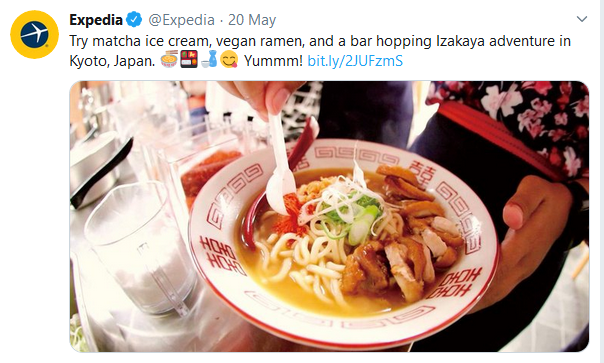
Top takeaway: Talk to your audience in a way that captivates their attention. Use imagery to stimulate their senses as your main goal is to encourage them to find out more – and spend money!
Social media is a great tool for travel companies, but it’s just one aspect of any marketing strategy. To really make an impression you must also!
#7 Help your consumers absorb key messages
According to the journal Science, we have to process five times more information today than in 1986. Infobesity is a real issue, so how can you help consumers to absorb key marketing messages without feeling overwhelmed? Well, consider this. Web visitors only read about 28% of what’s in front of them. Therefore, it’s essential to:
- Use bold headers and subtitles
- Bullet point your content for ease of use
- Use visuals to slow them down, increase engagement and boost shares
One travel brand nailing this concept is Intrepid Travel. The Journal is their brand blog. It’s full of inspirational and unique travel stories carefully entwined with beautiful imagery and headers.

Top takeaway: Take control of the user experience. Recognise infobesity and try not to bombard consumers with information. Always think of content presentation and make the most of imagery.
#8 Incorporate inspirational video
Video content will account for 80% of all internet traffic by 2021. And, as 54% of consumers want to see more video content from a brand they support, start creating your own videos. They don’t have to be long. In fact, bitesize and teaser content works well for YouTube channels. You can always produce a longer explainer video for your site. You don’t have to be budding Hollywood A-listers either. Speak to our team about producing a video within your budget.
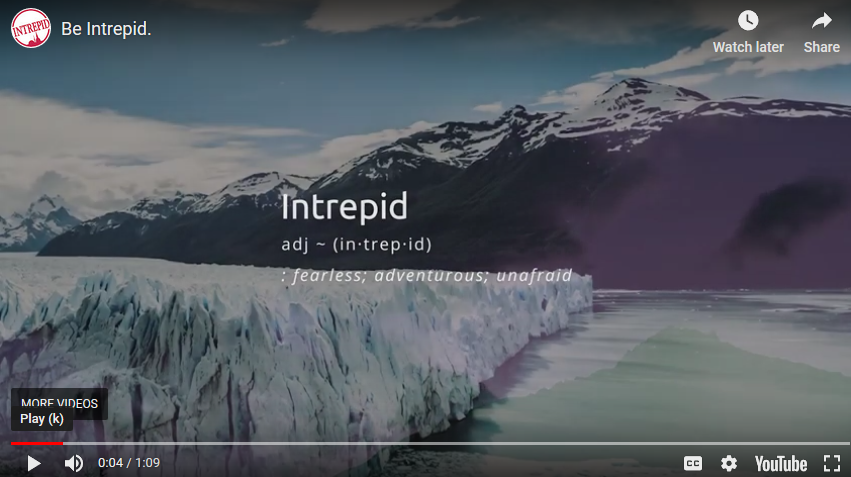
Intrepid Travel’s video is imbedded on their homepage. It’s one of the first things you see with the narration asking: “When was the last time you looked up in wonder; looked into the eyes of a complete stranger and didn’t look down; replaced what you thought you knew with the truth about places, about people about difference; took yourself so far from the world you know that you gave yourself no choice but to be challenged, to be fearless, to be open and curious and to be kind! Right now, more than ever, this world needs more intrepid people.”
Gripping stuff, right? But why? Well, it’s short and to the point? It’s inspirational and thought provoking. And it asks consumers direct questions making them think about their own individual life experiences.
Top takeaway: Incorporate video content into your travel marketing strategy. Sharable content can be posted in numerous forms including shorter snippets to various social platforms.
#9 Optimise your content for mobile use
It’s 2019! 42% of consumers use their phones to check out trips and adventures with 40% of travel bookings made via mobile devices. 80% also use mobile devices to book activities. Therefore, if your content is not optimised for mobile use, you’re instantly cutting off a huge audience who may otherwise be interested in your products and services. We were surprised to see several of the big travel firms with poorly optimised websites.. no names mentioned! Interestingly, the travel industry is missing out on a whopping £900 million a year in potential revenue due to this poor mobile performance, so don’t make the same mistakes.
Top takeaway: Make sure your brand content is accessible and easy to read via a mobile device to avoid missing out on essential revenue.
#10 Embrace travel trends
Embracing travel trends can help you use current consumer sentiments to your advantage. Trends popping up in 2019 include dark tourism – or visiting landmarks with a dark past such as Auschwitz or abandoned Chernobyl. And how about Trump and Mexico? Mexico’s tourism revenue reached $6.217 billion in this year’s first three months, a 7.2% increase from the same period last year… loving that!
We’re not saying you should start pimping these out as must-visit locations, but such tourism could fuel a blog category or a new series on Medium.
Remember, publicising your company doesn’t mean being pushy and salesy. It’s ok to talk about things that are related to your business but are not focussed on a particular offer or deal. In fact, the more interesting your content, the more likely people are to follow you.
Other trends include solo tourism which could inspire blogs such as “how to explore XXX alone.” Or, “A single girl’s guide to XXX.” What’s more, lesser-known Europe, slow travel and self-guided walking holidays are all areas of interest for travellers this year!
If you need some proper strategy for your travel brand contact the Contentworks team today for content marketing that works.
